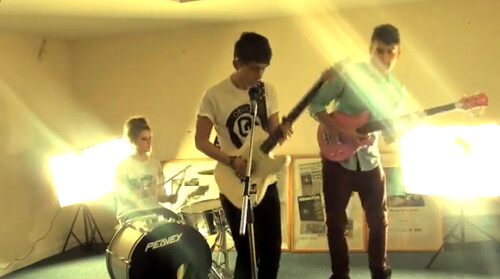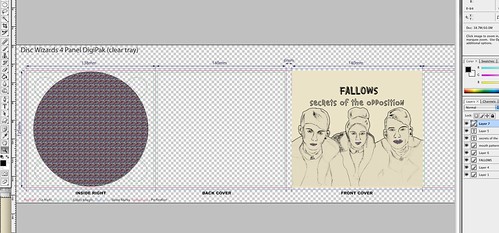In what does your media product use, develop or challenge forms and
conventions of real media products?
 |
| The kooks music video |
MUSIC VIDEO: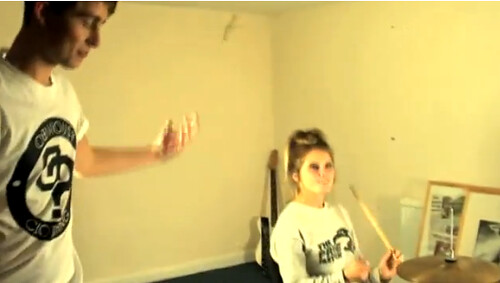
Throughout my music video, I think that it uses and develops the conventions of an indie music video. The conventions of an indie music video that I have used in my video are generally just the instruments, a band, a simple location. But I think that throughout the video, these conventions all develop together building up to the finishing sequence (the musical instrumental). The most indie conventional part of my product are the natural footage parts which develop throughout the song; these are conventional to the genre because it has been used in many indie music videos before. The natural sections of the video are the cut away from the performance shots showing how the band acts with each-other when not doing a performance. For example, The Kook's song 'She Moves In Her Own Way'. I used this as an example because when I was carrying out production I considered this video a strong influence. To the right are two screen shots; the top one is a screenshot from my video that I chose to compare to the other which is from the kooks video. They both show the band sitting around chatting, I chose to use footage like this so it fit in with the indie genre more. I think that this is conventional because when you think of an indie band you think of them being 'organic'. Whereas typical boy bands are all manufactured and indie bands are not and normally live the lifestyle that they are showing in their music videos, songs etc. I also admired the home made look that it had but also the use of editing, performance and natural shots also intrigued me. This music video is strongly based on natural footage but it also includes some performance sections as well. However, they do not use the typical band set up of guitars, drums, microphones etc. An example of this used in an indie video it 'Always like this' performed by Bombay Bicycle Club which I also used as an influence during the research and planning of my production process. The way that I set up my instruments was also slightly influenced by this music video because I liked how they were all spaced apart. However, I did not have enough space to make it look excatly how I wanted. When it came to editing I also tried to do something much alike both of these examples video and I think that to an extent I was able to do this which could also be a reason why my music video is conventional to the indie/indie pop genre. I think that this is most shown in the finishing sequence of my video when all of the shots are edited to the beat of the guitar solo. Although, I think that this music video will only be appealing to people who appreciate the indie genre and have watched quite a few videos like it before. This is because people who enjoy listening to pop for example, would be used to watching lots of bright colours and dance routines etc. which isn't shown in this music video and people who appreciate the indie genre would also appreciate the simplicity put into the music videos because they care more about listening to the music. Overall, my media product seems to use the conventions of real media products but they may not be such elaborate features as a real existing music video has. This could be because of many things but I mainly think that its because of the time frame we had. Luckily, because I chose such a lo-fi genre (a lo-fi genre is conventionally home grown and focus on life and music rather than being flashy like some other genres e.g. rap genres), I was able to create a home video looking product and it would still compliment the conventions of a real media product. If I was going to do this project again, I would definetely change some of the editing that I done. I would make the lighting and colour alot more nuetrual and would make them so yellow. I would also want to have more footage from the same production day.
 |
| Bombay bicycle club music video |
1. There is a relationship between the lyrics and visuals, with the visuals illustrating, amplifying or contradicting the lyrics.
I believe that in my music video, there is a strong relationship between the lyrics and the visuals. This is mainly shown in the section specifically on the chorus when it says 'this is the life, this is the life' and it shows the cut away, natural scenes of the band with their friends demonstrating that 'this is the life' that they live everyday. These type of clips occur throughout the whole video and some of them are just of the band in the same room they are performing in. This shows the off stage life they live as well with appear to be fun and laid back. Because the lyrics throughout are quite happy and cheerful the majority of the music video reflects this. I think the way this was done in my music video compliments the indie/indie pop music video conventions well and makes it seem to be more of a realistic video. I mainly think this because there are many other music videos that use these same techniques with developing the lyrics and the visuals together throughout and I used quite a few of them as my influences. I also think that this is conventional because of the ages of the actors that are in the product. They range from 17-19 and this is a main section of the target audience I have. This is conventional because the age used is appropriate and it will be more appealing to my target audience because they will think that it is treatable. This also emphasis' this is the life' that people should be living (a fun happy one).

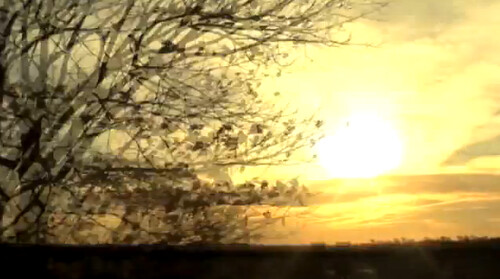
2. There is a relationship between the music and visuals, with visual illustrating, amplifying, contradicting the lyrics.
 I think that this is also shown in my music video, but not as much as the lyrics and the visuals. The main part where this is shown is at the beginning and the end of the video where it is showing the running footage of the 'car journey'. This is also shown in the kooks video in their instrumental opening sequence a lot like mine. This type of editing is also shown in the sections of the chorus when the guitar motif is being played where the pace of the editing is fixed to the guitar sounds. This is effective and conventionally because alot of mainly performance based music video use sharp editing to make it more interesting but it also gives a nice effect and compliments the instruments as well. Much alike the answer to question one, there is a relationship between the music and the visuals in the way that the band show what type of life the live which goes with the title of the song and the lyrics.
I think that this is also shown in my music video, but not as much as the lyrics and the visuals. The main part where this is shown is at the beginning and the end of the video where it is showing the running footage of the 'car journey'. This is also shown in the kooks video in their instrumental opening sequence a lot like mine. This type of editing is also shown in the sections of the chorus when the guitar motif is being played where the pace of the editing is fixed to the guitar sounds. This is effective and conventionally because alot of mainly performance based music video use sharp editing to make it more interesting but it also gives a nice effect and compliments the instruments as well. Much alike the answer to question one, there is a relationship between the music and the visuals in the way that the band show what type of life the live which goes with the title of the song and the lyrics.
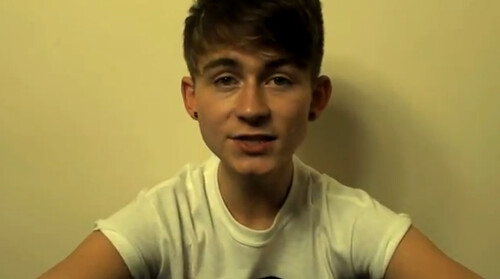 3. Record companys will want lots of 'star' close ups.
3. Record companys will want lots of 'star' close ups.
My music video consists of a few close ups of the 'star' (lead singer) of my band. Although this isn't really a convention of the indie genre I still think that the use of some close up gives the footage a bit of variation and makes it more interesting. I think that throughout my product it becomes apparent who the star is however, I didn't purposely create this. I used these close ups because I thought that it would make the video interesting and I recorded close up of all of the characters in the video. By not using many close ups of the 'star' I think that this has made my media product more alike existing media products from my genre of focus. In addition, there are some media products that have used close ups like the ones I have used. An example is the music video for the song Awkward performed by San Cisco which is a video that I have also used as an influence throughout this process. The pictures to the left (from the top down) shows a screen shot from my video and a screen shot from the 'Awkward' music video. These show the similarities between the types of close ups used on the stars in my video and other existing media products as well.
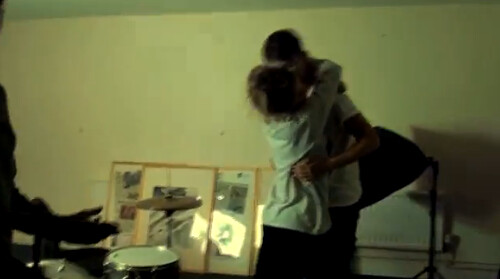 4. Voyeurism. Although my video doesn't use voyeurism in the way that a pop video would such as a Lady Gaga video (involving the star wearing minimal clothing and doing lots of provocative dance routines with different exaggerated costumes etc.), I think that it does use a but of voyeurism that is suitable for the genre it was made for. There are small sections in my video that show a love connection between the lead singer and the drummer. This is an appropriate type of voyeurism for this genre because their isn't an over the top, purposely made love connection between these two characters, it is a lot more natural and the love story doesn't develop throughout the song/video. I also think that this is a good type of voyeurism to use in an indie video because it shows an off stage intimacy which is interesting and fits well with the song 'this is the life' because it is showing the actual life that the characters are living.
4. Voyeurism. Although my video doesn't use voyeurism in the way that a pop video would such as a Lady Gaga video (involving the star wearing minimal clothing and doing lots of provocative dance routines with different exaggerated costumes etc.), I think that it does use a but of voyeurism that is suitable for the genre it was made for. There are small sections in my video that show a love connection between the lead singer and the drummer. This is an appropriate type of voyeurism for this genre because their isn't an over the top, purposely made love connection between these two characters, it is a lot more natural and the love story doesn't develop throughout the song/video. I also think that this is a good type of voyeurism to use in an indie video because it shows an off stage intimacy which is interesting and fits well with the song 'this is the life' because it is showing the actual life that the characters are living.

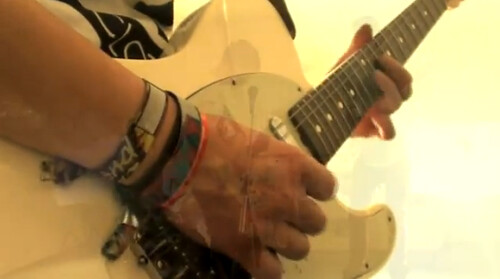 There are also some other sections of my media product which reflects real media products that have been made.
There are also some other sections of my media product which reflects real media products that have been made.
Firstly, as well as using close ups of the characters in the video, I also included a few close ups of the instruments in the video. This is often used in other music video but a specific example of this is again from the San Cisco music video (shown to the left). This is complimenting conventions of my genre because a lot of bands in this genre focus a lot on the actual music rather than focusing on things such as big gold chains, fast cars e.t.c which is what you would see in a hip hop music video. Overall, I believe that my music video doesn't challenge anything that is in a normal music video because it does seem to be very conventional. Although I think that if I was going to do this project again, I would definitely try to add in some more footage and make the editing sharper a lot like the Bombay Bicycle Club video; this could also be make much more interesting by including a range of locations like the Kooks video.
 DIGIPAK:
DIGIPAK:
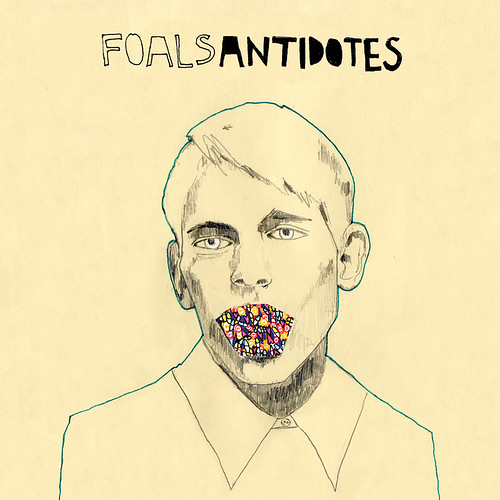 Above is an image of my completed four panel digipak which I completed on photo shop.
Firstly, I think that this front cover uses typical conventions of real media products and this is shown in the image below which is the front cover of the indie band Foals album Antidotes (example shown at the bottom of paragraph). When approaching the planning of my digipak, from the beginning I knew that I wanted to use this as a main influence. This is because I thought that the sketching used for the imagery and the font as well gave a good representation of indie digipaks as a whole. Many other bands have used this artistic approach such as Two Door Cinema Club who use artist's work to influence their digipaks. One way that I challenged the forms of real media product convention is my use of an actual image of the band. Many indie bands don't use any imagery of themselves and they always tend to use an abstract image (shown in the foals example) but most of the time they don't have anyone featuring in their album covers/digipaks. I also think that the simplicity in this digipak also uses different forms of conventions of the indie genre especially the fonts used throughout the three panels. The actual CD design was just simply the pattern used in the mouths of the characters on the front cover made into the shape of a CD. I used this as the CD because I have seen this type of technique used in existing media products. Specifically, it was used in a Two Door Cinema Clubs album 'Tourist History'. They had a main theme to the whole digipak and the CD artwork was taken from a small section on the front cover (shown in example below). However, the pattern that I used was a lot more noticeable than this feature on their album but I thought that the mouth section would be the most appropriate to use for the CD The back cover appears to be the most conventional section of the whole digipak. This is because alot like other media products it just consists of the track listing and the records details at the bottom. When it came to creating this section, I looked at the Two Door Cinema Club example again and based my ideas on that. However, after looking at other media products it became apparent that they also has thing such as bar code labels and 'compact disc' logos, so I added these on as well. Overall, I do think that my media product reflects the conventions of existing media products from the indie genre however, my product does appear to have a lot more detail than the examples I have used. If I was to do this again, I would try to use just one of the characters like it was done in the left pocket of my digipak because I think that this was effective. I would also try out stretching the image of the band so the whole thing went across all three of the main panels. This is because I think that this would be a lot more effective than the digipak I have created.
Above is an image of my completed four panel digipak which I completed on photo shop.
Firstly, I think that this front cover uses typical conventions of real media products and this is shown in the image below which is the front cover of the indie band Foals album Antidotes (example shown at the bottom of paragraph). When approaching the planning of my digipak, from the beginning I knew that I wanted to use this as a main influence. This is because I thought that the sketching used for the imagery and the font as well gave a good representation of indie digipaks as a whole. Many other bands have used this artistic approach such as Two Door Cinema Club who use artist's work to influence their digipaks. One way that I challenged the forms of real media product convention is my use of an actual image of the band. Many indie bands don't use any imagery of themselves and they always tend to use an abstract image (shown in the foals example) but most of the time they don't have anyone featuring in their album covers/digipaks. I also think that the simplicity in this digipak also uses different forms of conventions of the indie genre especially the fonts used throughout the three panels. The actual CD design was just simply the pattern used in the mouths of the characters on the front cover made into the shape of a CD. I used this as the CD because I have seen this type of technique used in existing media products. Specifically, it was used in a Two Door Cinema Clubs album 'Tourist History'. They had a main theme to the whole digipak and the CD artwork was taken from a small section on the front cover (shown in example below). However, the pattern that I used was a lot more noticeable than this feature on their album but I thought that the mouth section would be the most appropriate to use for the CD The back cover appears to be the most conventional section of the whole digipak. This is because alot like other media products it just consists of the track listing and the records details at the bottom. When it came to creating this section, I looked at the Two Door Cinema Club example again and based my ideas on that. However, after looking at other media products it became apparent that they also has thing such as bar code labels and 'compact disc' logos, so I added these on as well. Overall, I do think that my media product reflects the conventions of existing media products from the indie genre however, my product does appear to have a lot more detail than the examples I have used. If I was to do this again, I would try to use just one of the characters like it was done in the left pocket of my digipak because I think that this was effective. I would also try out stretching the image of the band so the whole thing went across all three of the main panels. This is because I think that this would be a lot more effective than the digipak I have created.
MAGAZINE ADVERT:


 To the right is the magazine advert that I created to go with the finished digipak. As shown to the left, it is evident that a lot of artists use the same imagery from their album cover and use it for their magazine advert with a few things changes (e.g. size and brightness etc). This is also shown in my digipak because I have also used the same image but instead of it being the most dominant feature like it is on the album cover, it is at the bottom and cover with companies logos and some text as well. This is because when it comes to making a magazine advert, the information on it have to be more important than the imagery and you have to get the information across about the album. I think that the way I have done thisis very conventional because I have used the same picture from the digipak which doesn't stand out very much anyway but I have also put it to the bottom of the page so the the text and info is the most noticed thing. The picture to the right is the actual CD cover for the James Blunt album and I have posted this because it shows the differences that are normally made between a album cover and the magazine advert. The way that I have done mine does therefore seem to be conventional because the imagery hasn't changed much at all apart from the added information in different fonts. However, there is an aspect of actual magazine adverts which I didn't do in mine. This is the change of contrast and colour and as shown in the James Blunt example, the texture of the image has changed to make it look slightly different from the cd cover. But I think that the way that the same imagery used is good for my genre because it is not the most popular genre so when the audience is looking at the magazine advert, they will recognise the 'album' in the shops straight away. This is a technique that has been used by bands such as Two Door Cinema Club themselves.
To the right is the magazine advert that I created to go with the finished digipak. As shown to the left, it is evident that a lot of artists use the same imagery from their album cover and use it for their magazine advert with a few things changes (e.g. size and brightness etc). This is also shown in my digipak because I have also used the same image but instead of it being the most dominant feature like it is on the album cover, it is at the bottom and cover with companies logos and some text as well. This is because when it comes to making a magazine advert, the information on it have to be more important than the imagery and you have to get the information across about the album. I think that the way I have done thisis very conventional because I have used the same picture from the digipak which doesn't stand out very much anyway but I have also put it to the bottom of the page so the the text and info is the most noticed thing. The picture to the right is the actual CD cover for the James Blunt album and I have posted this because it shows the differences that are normally made between a album cover and the magazine advert. The way that I have done mine does therefore seem to be conventional because the imagery hasn't changed much at all apart from the added information in different fonts. However, there is an aspect of actual magazine adverts which I didn't do in mine. This is the change of contrast and colour and as shown in the James Blunt example, the texture of the image has changed to make it look slightly different from the cd cover. But I think that the way that the same imagery used is good for my genre because it is not the most popular genre so when the audience is looking at the magazine advert, they will recognise the 'album' in the shops straight away. This is a technique that has been used by bands such as Two Door Cinema Club themselves.




